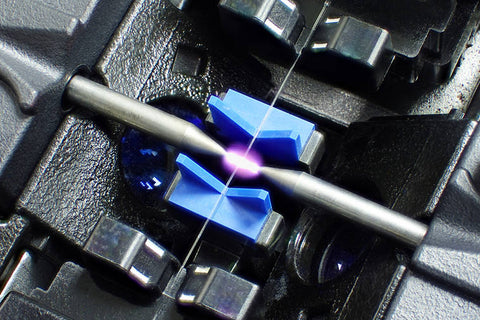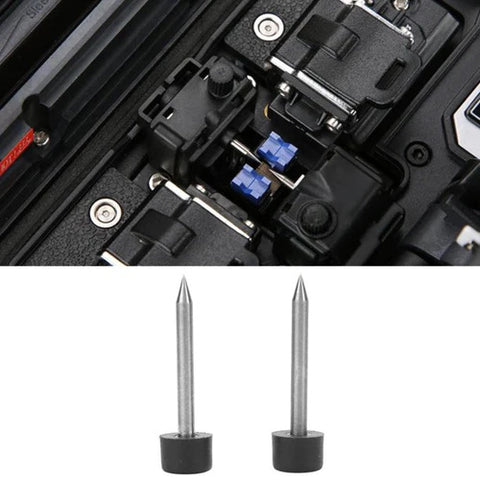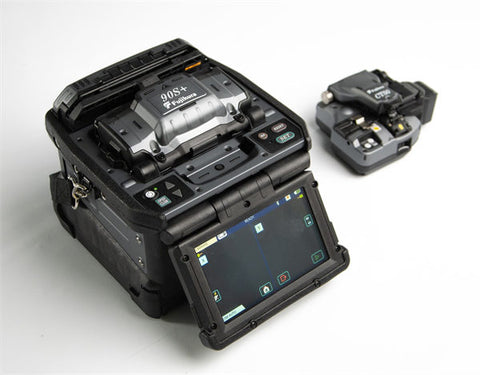What is fiber splicing machine?

The fiber splicing machine is a special design for the installation, operation and maintenance of optical fiber as a precision, durable, convenient optical fiber construction instrument.
What does a fiber splicing machine do?
fiber splicing machine is used for combining or splicing two optical fibers end-to-end via fusion. The objective here is to fuse the fibers together in such a way that no light is reflected or refracted, and having the spliced fiber be as strong as the regular fibers.

Types of optical fiber fusion splicers:
Single Fusion Splicer: These can only split two fibers at a time One fiber is stripped and cleaned and inserted into the machine. The same process is used for the second fiber. The splicer can take up to 10 seconds to cut the fibers and will also give an estimate of the loss of light. Single fiber splicers can splice fibers between 250 and 900-Micron, flat drop cables and splice on connectors.
Mass Fusion Splicer: Mass Fusion Splicers can Splice 1 To 12 Fibers At A Time. They are not as popular as single fiber Splicers, but if you need to split more than one fiber at a time, they can be very efficient.

Core Alignment Fusion Splicer: This is the most commonly used Fusion Splicer technology. It uses light and image detection to look at the fiber cores to measure and monitor the core position while aligning the fiber cores. This gives a precise fiber alignment, with a typical loss of only 0. 02db. Although this technology is expensive, it is also powerful, flexible, and efficient.
Cladding Alignment Fusion Splicer: Basic Fusion Splicers use Cladding Alignments to Line The Fibers. They sit in a V-groove and are lined up based on the outer diameter. This is a fast method of splicing and it is low cost, which is why it is usually used on low cost Fusion Splicers. Even if the outer diameters are aligned, it does not mean that the fibers are perfectly aligned, which leads to higher losses. Being a low-cost solution also means that it lacks the features of a higher-end splicer.
Introduction and use of fiber splicing machine
fiber splicing machine is mainly used for the construction and maintenance of optical fiber cables in optical communications, so it is also called optical fiber cable welding machine. The general working principle is to use a high-voltage arc to melt the two optical fiber sections while using a high-precision motion mechanism to gently advance the two optical fibers into one to achieve the coupling of the optical fiber mold field.

The main fiber splicing machine is mainly used in:
Construction, maintenance and emergency repair of optical cable lines of telecommunications operators, communication engineering companies and public institutions; Experimentation, production and testing of optical devices; Scientific research; Teaching and research on optical fiber communication in various colleges and universities.
Maintenance of fiber splicing machines
The consumable material of the fiber splicing machine is the discharge electrode. About 4,000 times of basic discharge required the replacement of new electrodes.

Method of replacing the electrode:
First, remove the protective cover of the electrode chamber, loosen the screw that holds the upper electrode, and remove the upper electrode. Then loosen the screw that holds the lower electrode and remove the lower electrode. The installation sequence of the new electrodes is the opposite of the disassembly action, requiring the tip gap between the two electrodes to be: 2.6±0.2mm, and symmetrical with the optical fiber. Usually the electrode does not need to be adjusted. Don't touch the electrode tip during the replacement process to prevent damage and avoid the electrode falling into the machine.

After replacing the electrode, the arc position must be calibrated or the processing must be done by yourself and the re-polishing. But the corresponding welding parameters will also need to be modified if the length changes.



